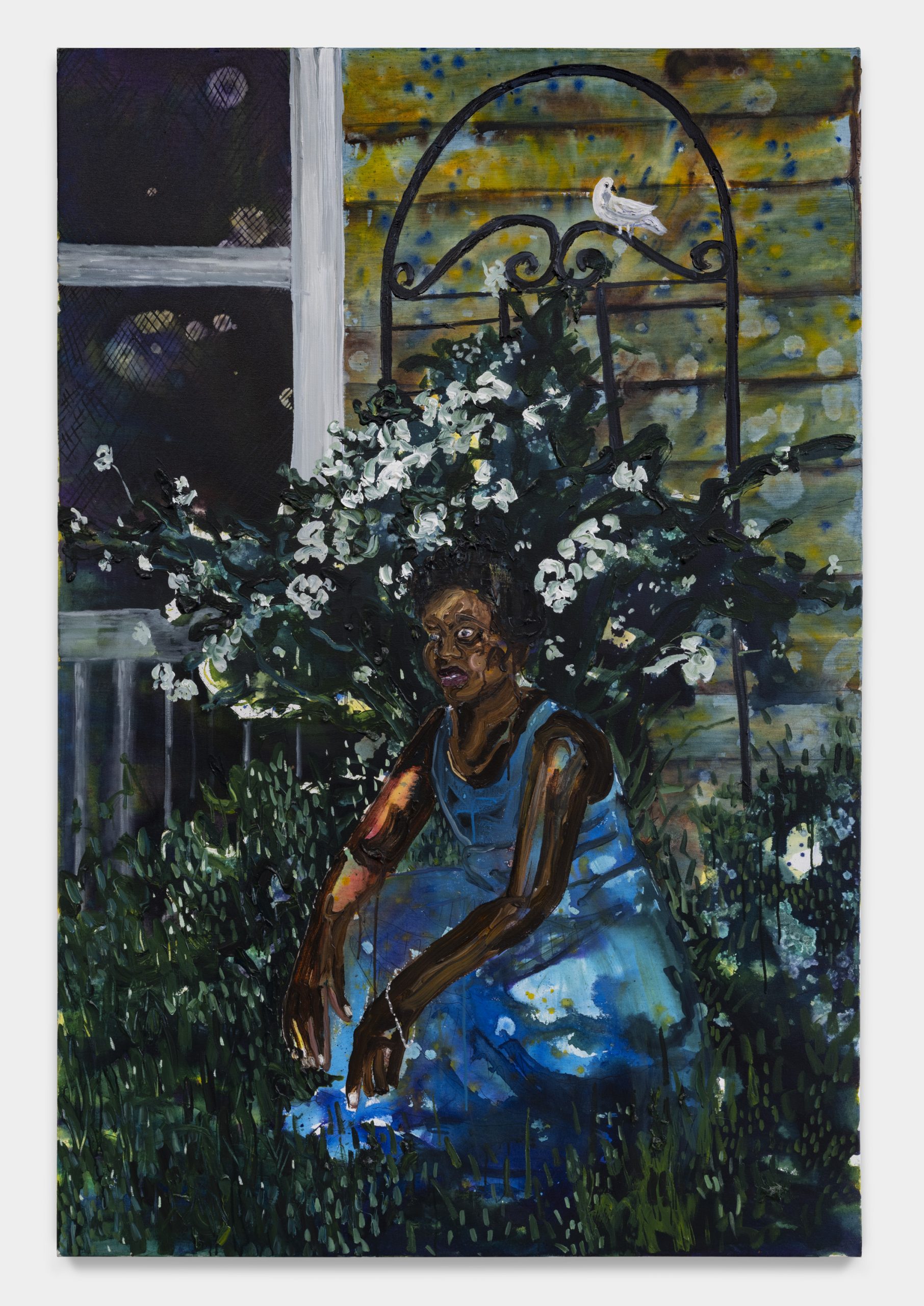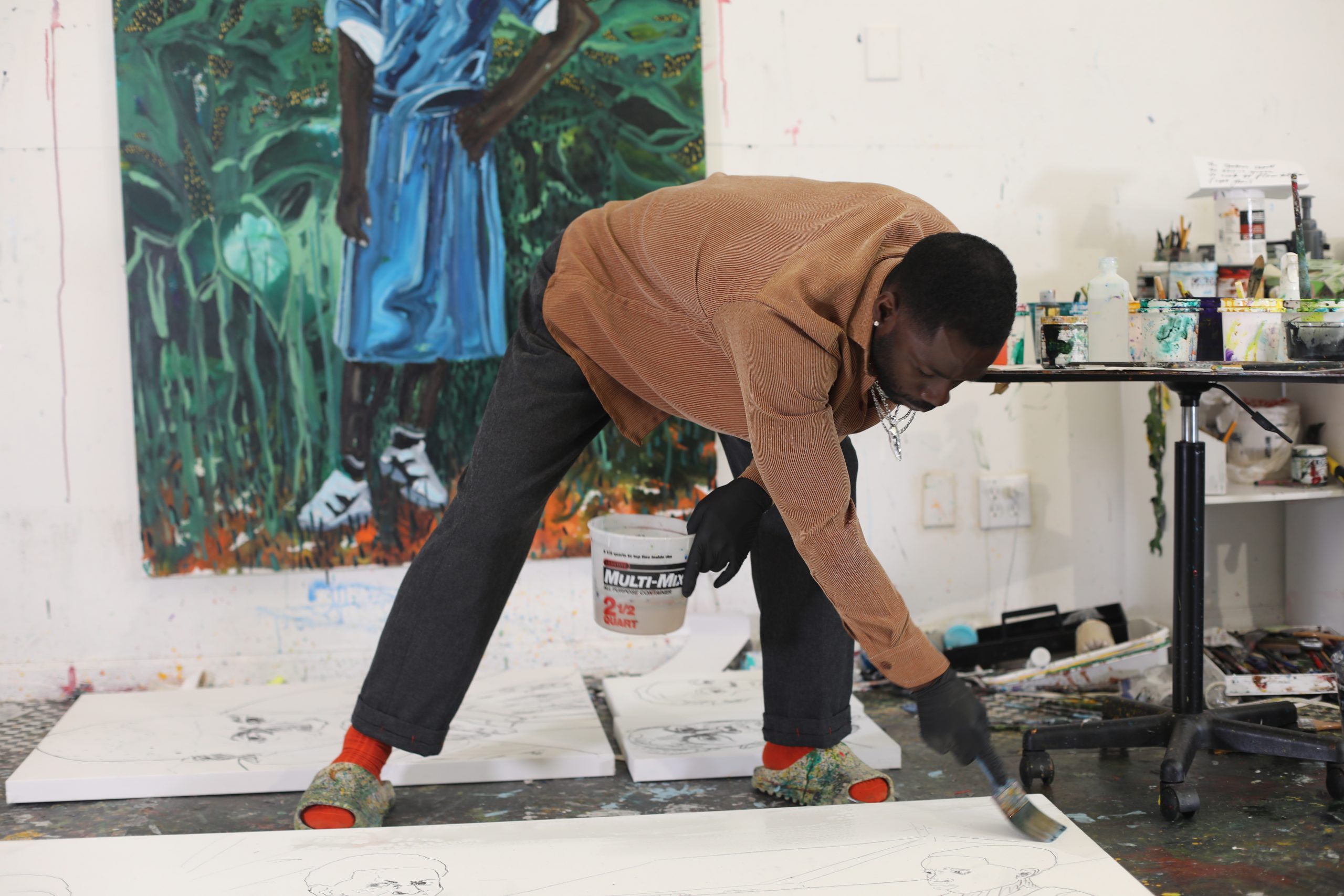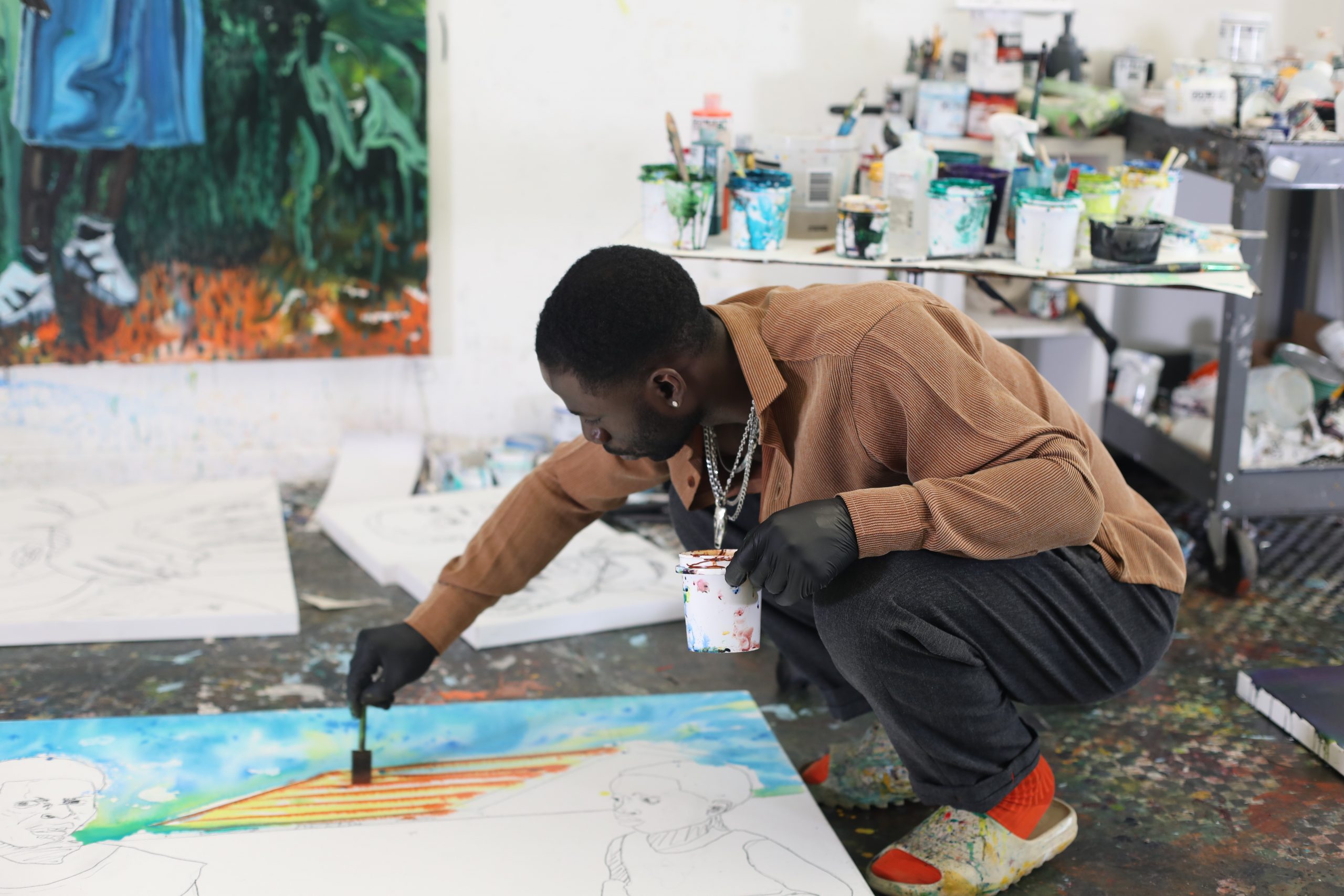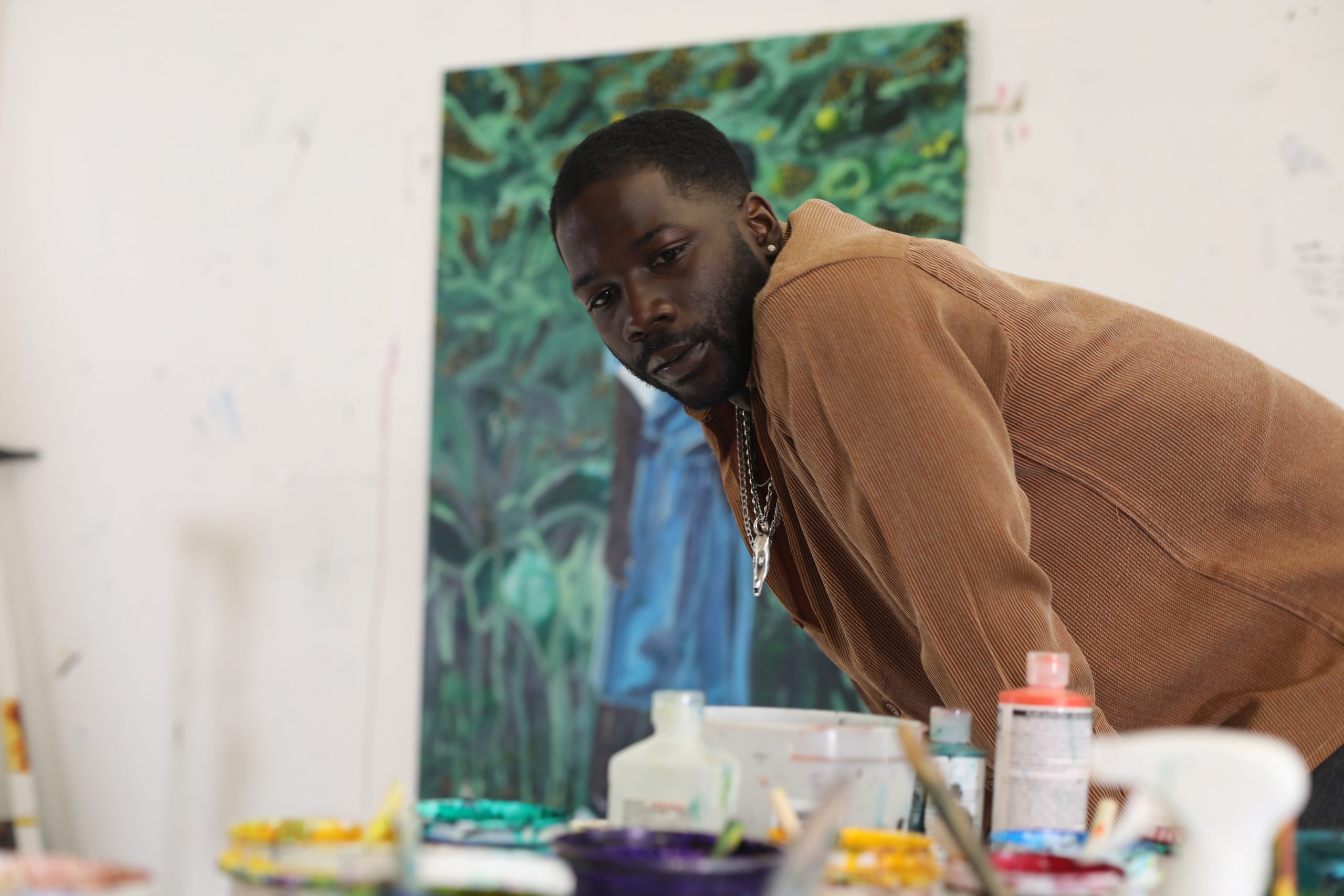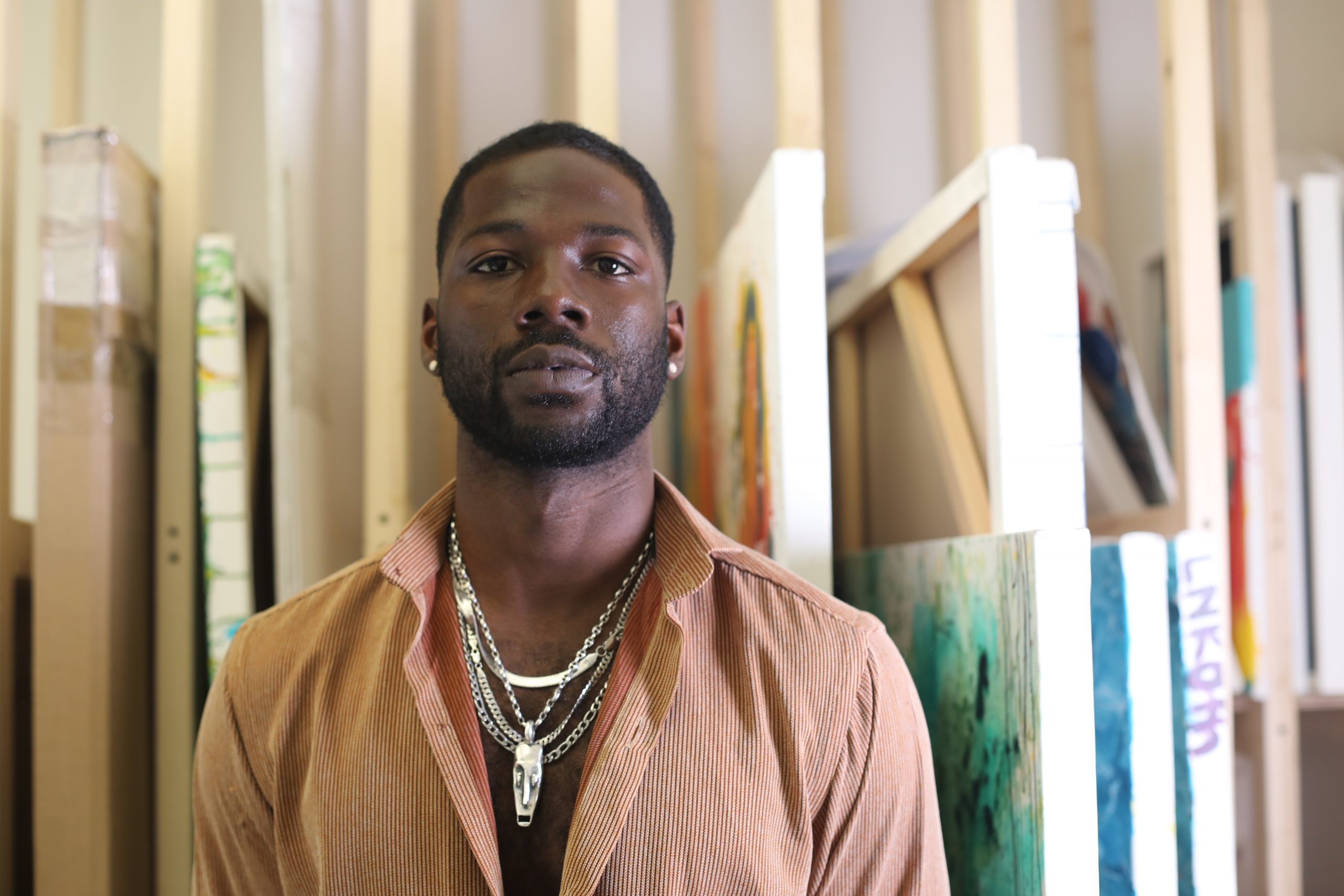
Where Things Happen #5 — July 2022
Ludovic Nkoth was born in Cameroon, and all his work is about “ his people”, as he describes them.
In fact, all his paintings generate from an identitarian struggle he has been through in his young age, and he feels now to share with all the Africans forced to leave their home and families, and relocate somewhere else.
Leaving his birth-family for the US early in life at the age of 13, Ludovic was raised, as he says, as “a stranger in a strange land”.
He ended up staying out of his country for years, until just recently, when he got back. Understandably, since then, a lot of Ludovic’s work has been deeply informed by this strong moment of reconnection with his country and his family.
Considering this experience, we can argue that Ludovic provides a specific diasporadic perspective, if compared to other African Americans who were born in the US, who most often know very little about the country of their family roots.
Coming into stage in his works it’s a different narrative, deeply rooted in his birthplace’ culture, as well as in the resulting cultural trauma of a forced displacement and identity renegotiation, he lived all on his skin at a young age.
We met on one of the first very hot days of summer in the city, at his studio in Midtown Manhattan. As I get in the corridor on the floor where the studio is located I hear some tones: Jazz! I guess it comes from his studio. As I approach the right number, this impression will be confirmed.
Ludovic opens with a big smile, almost dancing on the notes while he’s moving in the room. Getting in, I acknowledge that he has a very calm but positive energy, that makes me quite spontaneously take a seat, in one of the armchairs where he and a friend were sitting sipping apple juice.
This is his favorite, he comments.
Ludovic just had a major solo with MASSIMODECARLO in London, but his studio was already filled up with new works in progress.
It really looks like art is at the very center of his entire life, as a need and a solace, and a psychological toll of both reconnection and celebration of his roots, culture and family, so far away.
A new work hanging over us immediately catches my attention: a series of bust portraits of black men, standing solemnly over an explosive warm-tones abstract background.
As in a vetrine of some museum they repeat themselves, with just slight variations.
In molding them Ludovic just freely explored the possibilities of extending, drawing, and pulling the paint matter around these faces while shaping their expressions and therefore characters.
He would explain to me that this is part of a new series he wants to make to address both massive incarceration in the US, as well as the need of self-identification by the black people in an official art history which has long excluded them.
Interestingly, he confesses that the work actually started with a self portrait, but then he let the color direct him in unexpected directions while adding a face after the other, revealing endless possibilities of self identification and relation with others.
As in jazz, the final work develops and completes in repetitive addition through a system of unexpected improvisations. A blue version of this was going to be presented at Art Basel.
The openly experimental dimension of his work goes well beyond the simply figurative portraits he’s most known for.
And this becomes much more evident to me, as he guides me to go deeper into the process behind the surface and the thick painted top layers of the canvas: seeing them on process reveal to me an unexpected abstract and performative side of his practice that hides beneath, and is purposely hard to detect in the final work.
Once Ludovic approaches a canvas he really wants to have fun, he says.
He dances over it, throwing colors and improvising movements, following the rhythm of the Jazz he often listens to.
The result is a lively expressive colorful background, not far from those of his predecessor, Sam Gilliam. However, this richness silently hides benheat of the bodily layers of paint he will later add on.
As he comments, it’s hard to kind of “erase” yourself through this process, but he’s now very keen on exploring how these different layers can interact, merge and emerge from the main scene, not as juxtaposed but as something that can integrate the full visual experience of the work.
Ludovic already went further in this experimentation, “printing” the fluid movements of color on other papers. He’s waiting to understand what can then manifest on these fluidly abstract surfaces, but some oil pastels figures could be probably very powerful.
On the other hand (and quite in contrast with the gestural improvisation described above) most frequently his art-making process starts in a very different way: quick traces and simple drawings can also be at the foundation of his paintings, but then manipulate those figures following the directions the color may suggest him, so they can also be totally alterated. Again, the performative and highly physical approach to canvas returns at this stage, when Ludovic moves the painting on the surface in molding figures.
Ludovic then shows me some sketchbooks: he admits how he actually loves drawing, as this allows him to filter ideas fast.
However, when it comes to painting he looks for a totally different experience.
Interestingly, in some of those the backgrounds of some luscious forests are also the only thing really more definite, and with colors. He explains that this helps him visualize how figures will exist in space.
Connecting this with the process adopted in recovered-memory therapy, I can see in all Ludovic’s work an attempt to reconnect first with the scene of a memory, then process it, and retrieve it fully in the events and characters moving into that.
In fact, I would later understand how his practice has always been much about claiming a right for characters to manifest and exist.
Through his densely pastured thick layers of colors, all the figures acquire a new physical vibrant and bold presence on the canvas, as if they are some photos to be developed and memories coming back to eyes.
There’s a special painting he would show me towards the end, and it seems to be for him the biggest treasure there: the large canvas portrays on human-scale his grandfather, from a picture he took after finally reconnecting with him when he got back to Cameroon after years. Winding brushes make the figure with a bold and fierce presence, looking at the viewer. He portrayed him as a distinct man, with a gray suit and a lush forest behind.
There’s so much going on in that painting, and for that reason it is for him a great source of inspiration for new works: here was where he first identified the new possibilities in letting the abstract background emerge.
Of course, he would never sell it, despite confessing that many people have tried.
He told me to have quite a control on his works, and he owns a lot of them: having his own inventory is very important, also in view of upcoming museum shows he cannot reveal.
Nevertheless, looking at Ludovic practice at large, there’s also something that goes beyond the personal need of memory retrieval and reconnection with his home country, and aims at a broader collective conversation.
As Ludovic would later explain, he sees his work as a tool to give to “his people” a new historical prominence, in the potential that the art has to stay as a monument or trace of some path of collective identity, and empowerment.
In this sense, his work is also an attempt to reclaim things that were long taken away from his people, such as power, culture, the idea of self, and the idea of being black and proud.
Decolonizing the narrative, by giving to their own perspective a new space and power of expression within a new art historical canon that has started to be discussed today.
He confesses that he feels all this responsibility even when he’s just making works that will be available for sale in purely commercial venues, as fairs: he feels himself a privileged, being able to bring his voice in such venues, so he want to turn it into a tool to echo the ones of his people don’t access these worlds.
Therefore, we could also argue a political aspect in Ludovic’ practice, but as we would discuss, no work of art can really avoid having a political statement: the moment you decide to portray someone and you pick a subject, there’s already a political position implied.
He shows me a portrait of his mother, wearing these goans with the Cameroon president. He briefly explains to me the contradictions of his mother’s behavior, and the brainwashing most people are subjected to there. But it’s as if he would rather avoid the topic.
Eventually, this visit made clear to me how Nkoth’ work is both deeply sentimental, and deeply political, and thus able to create some powerful but also very sincere statements about today’s global society, and issues that are still to be addressed.
We got out together and got an uber to an exhibition we both wanted to check out, while discussing all of this.
Through our conversation, I came to acknowledge how, despite he’s today one of those artists on the radar of collectors around the world, Ludovic still preserves this genuinely passionate energy, and a true need for art-making that drives him in endlessly exploring the new potentiality of his practice.
He wants to experiment with the endless possibilities of the painting.
And, most importantly, he wants to have fun. After all, despite being informed by personal and collective trauma, his enthusiastic approach to art, fully shows how creativity can just be fed by those positive energies, despite the harshness of life. And can instead help to address them, with a different healing and regeneration-oriented attitude.























